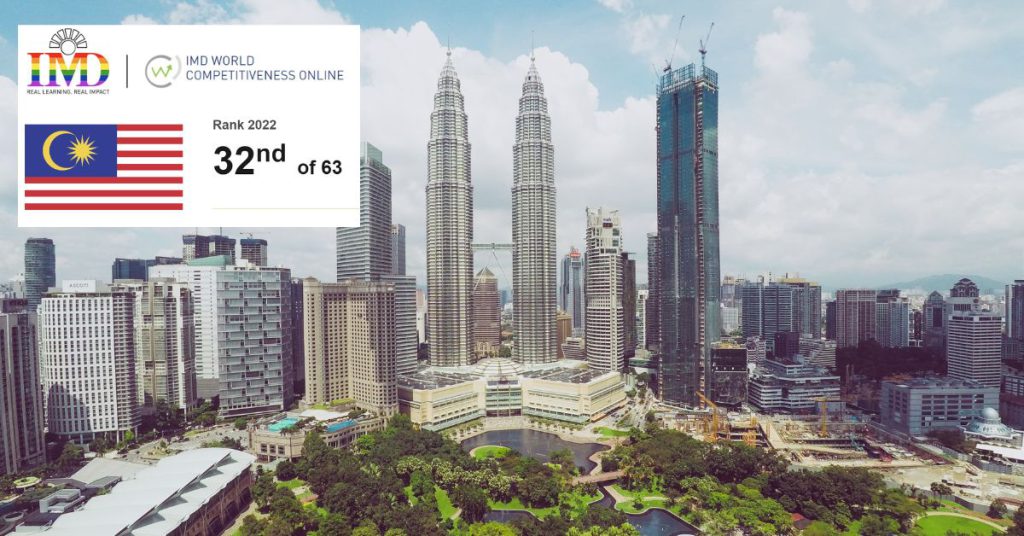Every year, the International Institute for Management Development—best known as IMD—releases a World Competitiveness Yearbook (WCY).
The yearbook serves as a report that analyses and ranks countries according to how they manage their competencies to achieve long-term value creation.
According to the IMD, an economy’s competitiveness cannot be reduced only to GDP (gross domestic product) and productivity because enterprises also have to cope with political, social, and cultural dimensions.
So, if it’s not just looking at GDPs, how does IMD rank countries?
An intensive methodology
IMD’s WCY is based on not one, not two, but 333 competitiveness criteria.
Each criterium was selected as a result of “comprehensive research using economic literature, international, national and regional sources and feedback from the business community, government agencies, and academics.”
The full list of criteria can be found on the IMD website, but it essentially looks at four major categories, each with five subcategories:
- Economic Performance: Domestic economy, international trade, international investment, employment, and prices;
- Government Efficiency: Public finance, tax policy, institutional framework, business legislation, and societal framework;
- Business Efficiency: Productivity & efficiency, labor market, finance, management practices, attitudes & values;
- Infrastructure: Basic infrastructure, technological infrastructure, scientific infrastructure, health & environment, and education.
Each weight of sub-factors is 5% (so 20 sub-categories amounting to 5% each would make 100%).

IMD looks at hard statistics and survey data, while also using background data to support its research.
The hard data refers to statistical indicators acquired from international, national, and regional organisations, private institutions, and IMD’s partner institutions. This hard data represents a weight of two-thirds in the overall rankings.
The remaining one-third uses survey data obtained from WCY’s executive opinion survey. The survey quantifies issues that are not easily measured, including: management practices, corruption, adaptive attitudes, and the agility of companies.
Out of the 333 critieria of the Yearbook, 255 are used to determine the World Competitiveness Ranking. Others are used for World Digital Competitiveness and World Talent rankings.
How Malaysia fared this year
The ranking covers 63 economies in 56 countries. IMD chose these based on the availability of statistics and IMD’s collaboration with local partner institutes. Malaysia, coming in at No. 32 on the list, which means we’re somewhere in the middle of the crowd.

In 2018 and 2019, Malaysia had been No. 22 on the list. Since then, the country has gone down ten places to settle at No. 32.
Looking at the four categories, the biggest fall Malaysia had was in Business Efficiency, having gone from 24 to 38. Government Efficiency fell from 30 to 38, and Infrastructure from 32 to 37.
On the other hand, we improved in Economic Performance, having risen from 15 to 12.
Our highest-ranking subcategory was prices, coming in at No. 4. Our worst ranking was domestic economy and business legislation, which were both No. 50.
Challenges, improvements, declines, attractiveness
Malaysia showed improvements in categories such as real GDP growth, employment (long-term growth), labour force (long-term growth), office rent, exports of goods, safely treated wastewater, internet users, and more.
However, the country declined in consumer price inflation, tourism receipts, population, exchange rate stability, freedom of the press, quality of life, bribery and corruption, flexibility and adapability, and credibility of managers, amongst other things.

Respondents of the Executive Opinion Survey were asked to select five indicators out of 15 that they perceived as the key attractiveness factors of their economy. The top selected indicators was Malaysia’s business-friendly environment, the skilled workforce, cost competitiveness, reliable infrastructure, and dynamism of the economy.
At the bottom of the list (meaning least attractive indicators) were effective labour relations, effective legal environment, strong R&D culture, competitive tax regime, and at the very bottom, competency of government.

According to information provided by the Malaysia Productivity Corporation, IMD says the challenges the country is facing in 2022 include:
- Expanding regulatory reforms initiatives to micro levels through public-private collaboration;
- Enhancing technological adoption to increase productivity at firm level;
- Accelerating talent development initiatives to keep up with new and emerging job challenges and nurture a future-ready workforce;
- Strengthening productivity and competitiveness through mindset change and creativity.
Malaysia’s potential
Other than the World Competitiveness Ranking, the IMD also ranks talents. For 2022, Malaysia’s Talent Ranking was 28, once again a fall since last year’s ranking at 25.
We mainly saw falls in the “readiness” factor, which measures the quality of the skills and competencies that are available in a country’s talent pool.
With conversations about brain drain on the rise again, it makes sense why the challenges of 2022 include accelerating talent development initiatives.
According to IMD, people’s motivation for work especially during the pandemic has proven crucial for economic success. It found workers are increasingly motivated by a high quality of life, flexible working, and opportunities to train on the job.
Hopefully, Malaysian leaders can implement these findings and create an environment that fosters local talents to produce a more competitive economy.
- Learn more about IMD’s World Competitiveness Ranking here.
- Read other articles we’ve written about Malaysia here.
Also Read: Malaysian sellers, here’s what you need to know before selling your products on Amazon.com
Featured Image Credit: Unsplash










